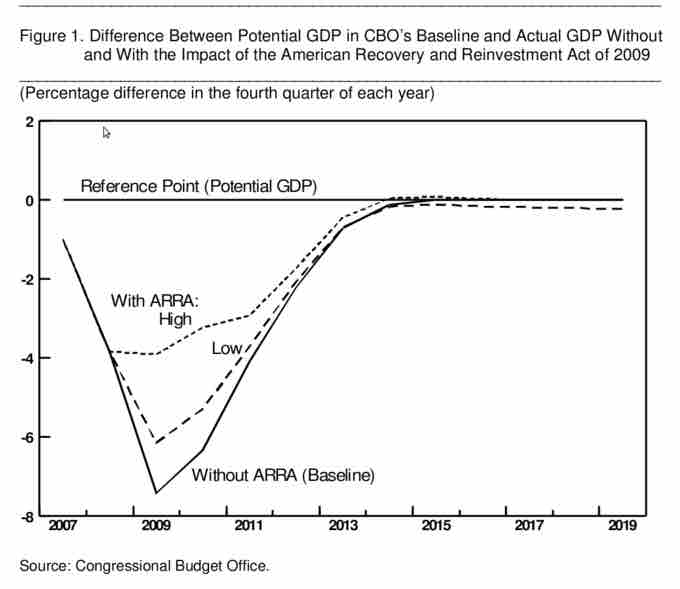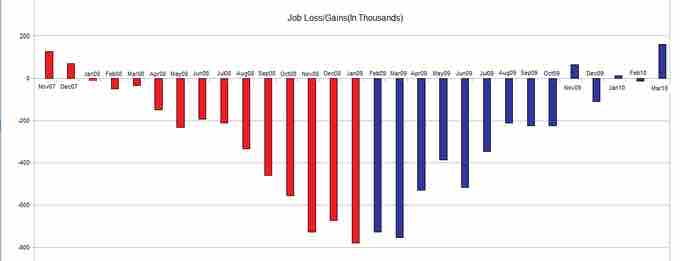The 2007-2009 economic crisis has had far-reaching and profound effects on both the domestic and global markets, primarily as a result of the sub-prime mortgage disaster originating in the United States. Addressing these economic ramifications to induce recovery has been the focal point of global governments and global agencies such as the International Monetary Fund (IMF). The objective of economic recovery when in crisis is to stabilize the economy, and from there recapture the value lost through economic stimulus strategies while addressing the factors which contributed to the collapse in the first place.
Stimulus Package
One of the key components to the crisis recover in the United States is an act called the American Recovery and Reinvestment Act of 2009 (ARRA), put into place by the Obama administration just as the first days of his term were beginning. This act has seen substantial debate, both positively and negatively, as to the efficacy and overall implementation of the program. Understanding the inputs, and expected outcomes, is critical to understanding the economics behind reacting to economic crises (particularly from a Keynesian perspective).
The stimulus package can be broken down via the attached figure in regards to monetary investment in specific places , totaling $831 billion (USD) between 2009 and 2019. The goal of investing or providing tax relief and subsidies for individuals and companies is to drive up purchasing behavior and offset the positive feedback loop attributed to economic crises. This is largely based on the Keynesian concept of driving spending through enabling spending, in turn driving up demand, creating jobs, and driving spending up further. President Obama's administration was criticized by classical economists for employing this as well as Keynesian economists (such as Paul Krugman) for not employing it enough. That being said, the efficacy in the attached figure demonstrates that it was likely a strategic reaction to the economic crisis .

ARRA Efficacy Projections
This graph points out the economic opportunity cost of not utilizing the ARRA, which would likely have left the U.S. (and subsequently, the global) economy in significantly worse shape than it is now.
Stimulus Investments (U.S.) of ARRA
This graphic demonstrates the different silos receiving government aid within the domestic economy, as a direct result of the American Recover and Reinvestment Act (ARRA).
Troubled Asset Relief Program (TARP)
Perhaps more debatable still, is the reaction to the inevitable and deserved bankruptcy of the banks and insurers involved in the toxic mortgage-backed securities (i.e. CDO's) that drove the economy into disaster were bailed out by the government. These companies, such as AIG, Bank of America, Citigroup, and other distributors of toxic investments were handed the required capital by the government to offset their massive losses due to undue risk and poor leveraging. This was in the form of the government utilizing tax money to purchase these securities, removing the toxic assets from the books of the companies involved (who were deemed 'too big to fail'). This move saved the economic decline and restored consumer confidence through direct government intervention.
TARP was also largely criticized, with a high number of seemingly reasonable objections. The first, and most intuitive, is that these businesses deserved to go under. Bad business practice, poor investment, and grossly unethical behavior deserves bankruptcy. Instead, the government demonstrated that, as long as certain fiscal influence is achieved, these competitive rules are negligible. Secondly, and slightly more complex, is the implementation of the TARP act (which necessitated SIG-TARP, an oversight group ensuring that TARP money went out to those who it was intended for). It was noted on many occasions that TARP money was ill-used.
Outcomes
While the long-term outcomes of these practices cannot yet be predicted, the progress made so far is worth analyzing economically. First and foremost, job numbers have improved, although not as much as had been hoped or expected (see ). While this is positive, it does not capture the large number of people who are underemployed or the individuals who have abandoned the search for employment. GDP growth has inched along to positive numbers, as has the profitability of many businesses and industries. Interestingly enough, as of the end of 2013, the stock market has not only recovered but expanded beyond 2007 levels.

U.S. Job Gains and Losses
This graph demonstrates the negative affect that the collapse had on jobs as well as the pacing of economic recovery in the short-term.